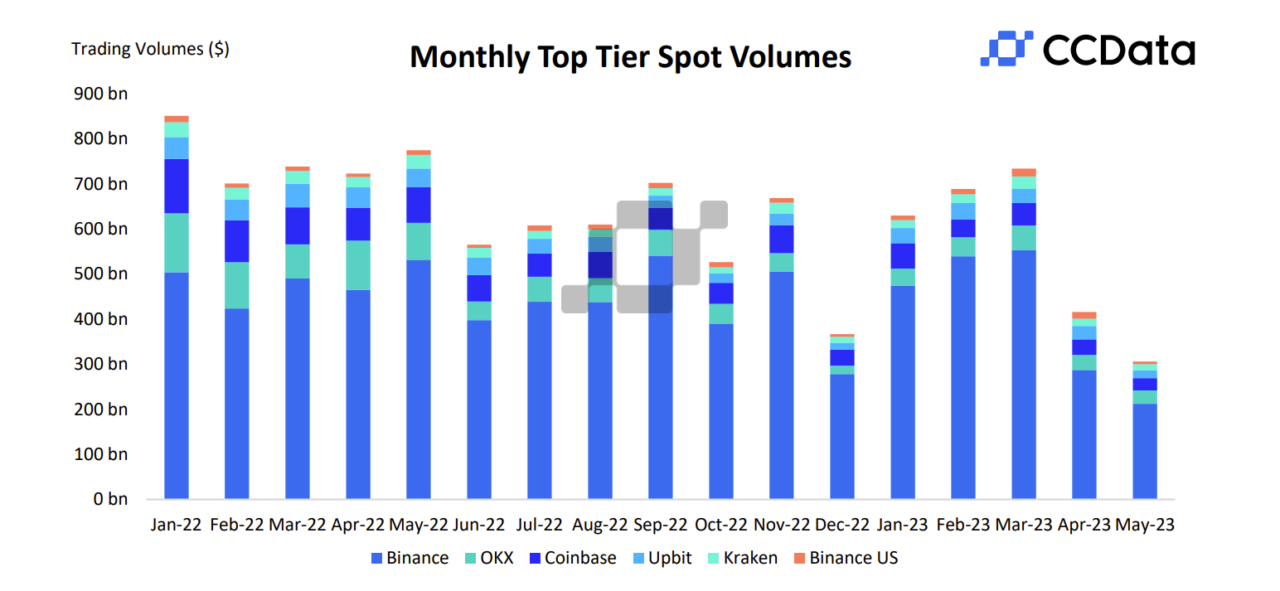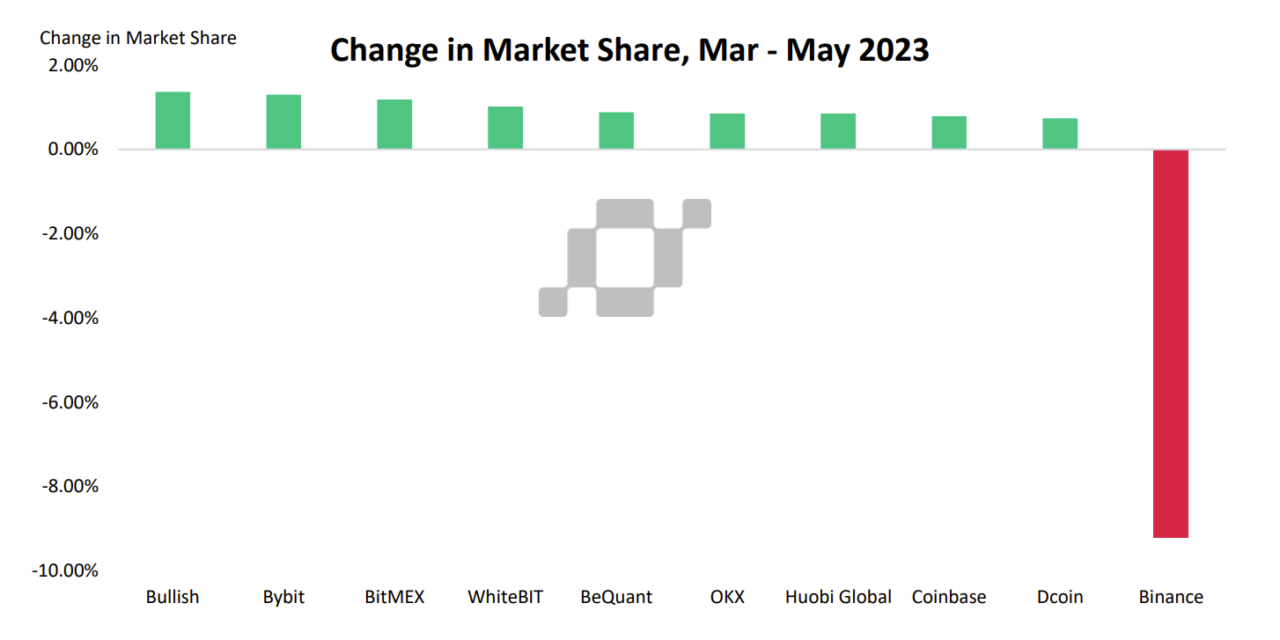The combined trading volume of both spot and derivatives on centralized cryptocurrency exchanges has fallen 15.7% to $2.41 trillion, recording its second consecutive monthly decline. Spot trading volumes fell 21.8% last month to $494 billion, their lowest level since March 2019.
That’s according to CCData’s latest Exchange Review report, which notes that the drop in trading activity can be attributed to a sustained period of narrow price movement for major cryptocurrencies, Bitcoin and Ethereum. The 30-day annualized volatility of these assets plummeted to levels unseen since the year’s outset, with a peak daily volume of $24 billion traded on May 5.

The report adds that leading cryptocurrency exchange Binance witnessed a decline in both spot and derivatives trading volumes. Spot trading volume on Binance slid by 26% to $212 billion, marking the lowest volume since November 2020, while derivatives volume on the exchange dropped by 16.5% to $1.10 trillion, the lowest since December 2022.
As a result, Binance’s market share of derivatives trading has fallen to 57.4%. The decline came after the exchange suspended zero-fee trading for USDT pairs and amid heightened regulatory scrutiny. The exchange was earlier this year sued by the U.S. Securities and Exchange Commission (SEC), accusing it of securities law violations.

In line with the broader market trend, derivatives trading volume slid by 15.7% to $1.95 trillion, marking the lowest level since December 2022. However, despite this drop, the market share of derivatives trading on centralized exchanges rose, reaching a record 79.8%.
Binance, as CryptoGlobe reported, has reportedly seen investors withdraw a staggering $790 million off of its platform shortly after it was sued by the SEC. The SEC’s allegations against Binance include engaging in the unregistered offer and sale of securities.
The charges also extend to CZ and his entities, accusing them of improperly mixing investor funds with Binance’s own funds. Furthermore, the SEC alleges that Binance bypassed its own controls to allow institutional U.S. investors to use Binance’s international exchange instead of the supposedly isolated U.S. version.
Featured image via Pixabay.









